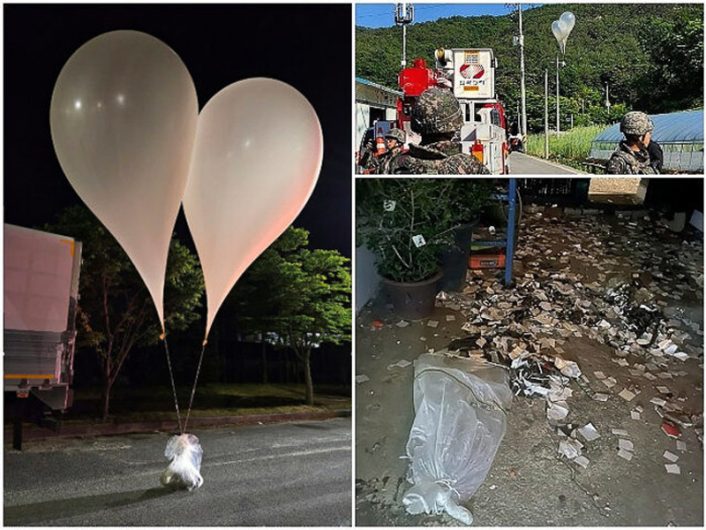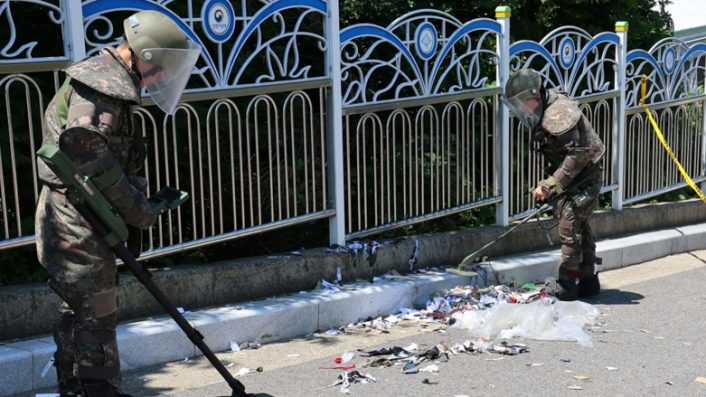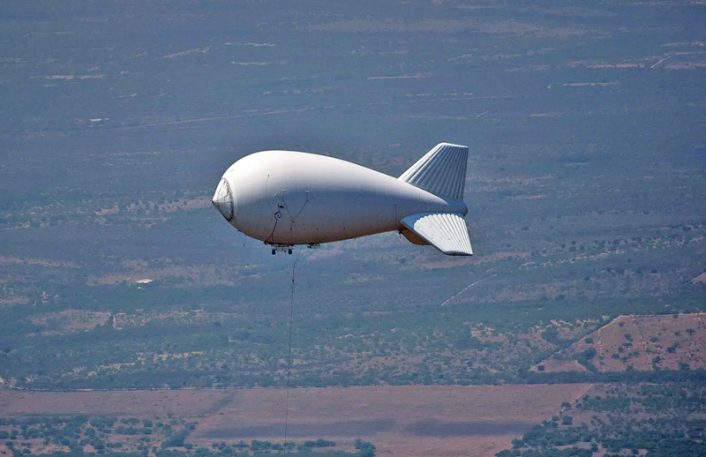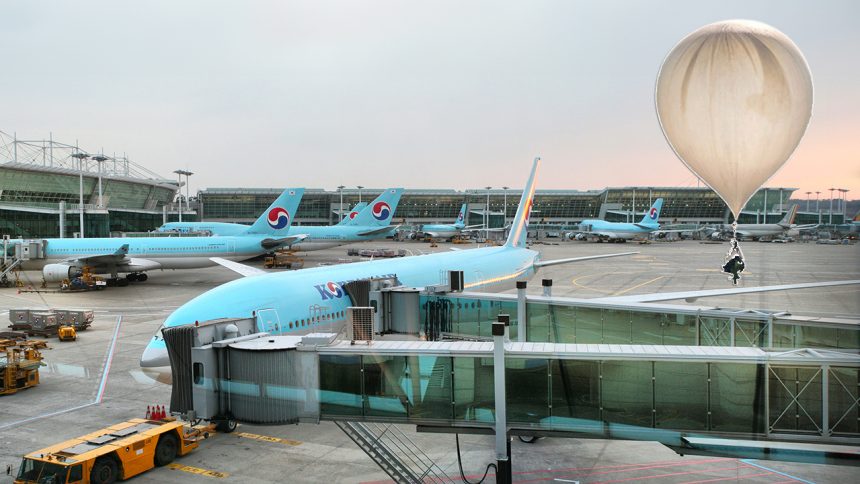Whether the escalation of balloon activity is a precursor to additional military activity or the emergence of a new normal for surveillance, testing and propaganda operations remains to be seen. But the increasing reliance on lighter-than-air assets is a noteworthy trend.
A bizarre campaign of harassment between North and South Korea has escalated in recent weeks as the two countries continue to send propaganda and garbage balloons across each other’s’ borders. The attacks reached a new level on June 25-26, 2024 when South Korea’s Inchon International Airport was closed for three hours after one North Korean balloon landed near passenger terminal 2 according to a report on Reuters.
Aside from the harassment created by balloons carrying garbage and feces, the balloons pose the threat of ingestion by jet engines and resulting potential damage, disrupting civil air traffic at one of the busiest airports in the world.
The South Korean government released a statement saying, “Among the items carried by the North Korean balloons have been articles printed with Hello Kitty characters, badly worn clothing, and soil containing traces of human feces and parasites”.


Inchon International Airport (IATA: ICN) is located approximately 40 kilometers (24.8 miles) south of the North Korean/South Korean border at the 38th parallel separating the two countries following the July 1953 armistice of the Korean War. As one of the busiest international airports in the world, Inchon International served over 70-million passengers in 2019 and is an important hub in the region.

Multiple tasks
While harassing attacks with balloons appear to have little military relevance, the use of balloons for everything from surveillance to biological and incendiary weapons delivery has appeared since WWII. These included the Japanese Fu-Go attacks on the United States in 1945. On May 6, 1945, six people were killed outside Lakeside, Oregon when a Fu-Go incendiary balloon intended to start forest fires detonated.
Last year, on February 4, 2023, a U.S. Air Force F-22 Raptor shot down a Chinese high altitude balloon just off the coast of South Carolina. The interception is cited as the highest altitude air-to-air missile interception in history and the first air-to-air interception by an F-22 Raptor.
“Shooting the balloon down addressed the surveillance threat posed to military installations and further neutralized any intelligence value it could have produced, preventing it from returning to the PRC,” said a senior defense official back then. “In addition, shooting the balloon down could enable the U.S. to recover sensitive PRC equipment.”
Before it was shot down, Chinese officials admitted that the balloon was theirs, saying it was a runaway weather balloon that was blown off course. US officials refused this statement: “This surveillance balloon purposefully traversed the United States and Canada,” said a senior defense official. “Its route over the United States, near many potential sensitive sites, contradicts the PRC government’s explanation that it was a weather balloon.”
The U.S. military has also launched high altitude balloons for training exercises according to official statements. A June 6, 2024 press release from the U.S. Army Pacific Command (USARPAC) says, “U.S. Indo-Pacific command joint forces will deploy High-Altitude Balloons (HABs) to Guam and the airspace around the Mariana Islands between June 7 and 18, 2024, in support of Valiant Shield 2024.”
DVIDS: Aerostar flight operations team members prepare to launch a high-altitude balloon (HAB) in support of Valiant Shield 2024 at Antonio B. Won Pat International Airport, Guam, June 10, 2024. HABs provide the U.S. military with long endurance and persistent air-based… pic.twitter.com/EH8nimIx5h
— Ian Ellis (@ianellisjones) June 18, 2024
The press release went on to say that, “Several HABs will be launched from the Won Pat International Airport before reaching their cruising altitude above 50,000 feet. The HABs will then move to airspace in vicinity of the Northern Mariana Islands as part of the training. At the conclusion of training, the HABs will be recovered in the continental United States. Coordination for the launch and training were made alongside local government leadership, Joint Region Marianas, the FAA, and Won Pat International Airport management.”
According to official sources within USARPAC, “The HAB systems include electromagnetic spectrum sensors and radio networking equipment, which will enable maritime domain awareness. All operations will be in full compliance with applicable national and international laws and regulations regarding flight operations. HABs will operate under direct control of U.S. operators during the entire time of flight. The HABs will continuously use Automatic Dependent Surveillance – Broadcast (ADS-B) technology to provide real time location and to ensure all operations are conducted safely and within digital observation of other aircraft.”

Balloon launches have also been observed on flight tracking websites from northern Michigan in the region of Camp Grayling, with no official information about the purpose or origin of the balloons being readily available. The balloons were observed climbing and moving eastward over the Atlantic.

Whether the escalation of balloon activity from North Korea, China and the United States is a precursor to additional military activity or the emergence of a new normal for surveillance, testing and propaganda operations remains to be seen. But the increasing reliance on lighter-than-air assets is a noteworthy trend at the opposite end of the technology and budget spectrum from new billion-dollar stealth bombers and F-35 Joint Strike Fighter production.










